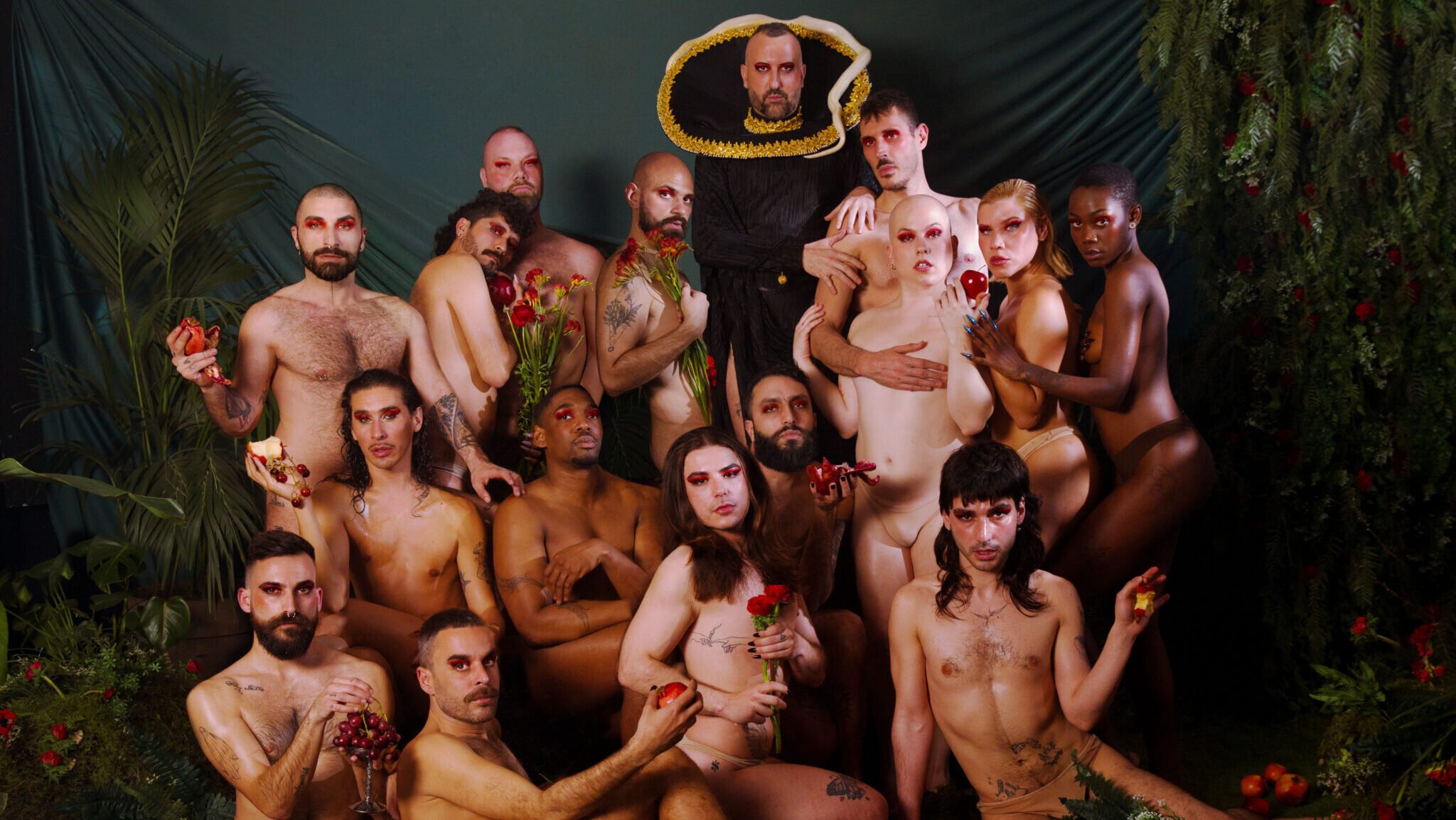This Queer Rendition of The Garden of Eden Makes You Wanna Take a Bite of Forbidden Fruit
In his newest visual project, The Queer Garden of Eden, artist and visionary Barry Brandon returns to the beginning, not just of creation, but of narrative control. Reclaiming one of the most iconic stories in Judeo-Christian tradition, Brandon reimagines the Garden of Eden as a queer, QT/BIPOC sanctuary, a dreamlike place where pleasure, truth, and divinity converge.This stunning photoshoot and accompanying film mark the first installment of Brandons bold Holey Week series, a queer reinterpretation of canonical spiritual stories that centers those historically excluded from them. And in Eden, Brandon isnt just tweaking the mythhes rewriting it from the roots up.A New Genesis, Born from Divine DefianceThe Queer Garden of Eden expands on themes Brandon explored in his earlier work Divine Defiance, which challenged systems that silence queer voices. While that piece was about resistance, Eden is about transformation.This project came from a very personal place, Brandon shares. It was about reclaiming stories that have been used to shame us, to tell us that our existence is something to hide or heal.In Brandons retelling, Eve isnt punished for seeking knowledge, shes honored for it. The truth flows not from God to man, but from a queer, feminine lineage: from Satan to the serpents (cast as AFAB women), to Eve (portrayed by a transgender woman), to Adam, and finally to queer men.Building a Visual Language of LiberationThe films aesthetic is rich, surreal, and steeped in spiritual iconography, yet unmistakably queer. Apples, cherries, pomegranates, and live snakes (yes, real ones) appear throughout the set as symbols of forbidden knowledge. But here, that knowledge is no longer dangerousits sacred.Biblical and religious art were reference points, but Brandon intentionally queered these elements, reshaping them into something both reverent and revolutionary. We twisted them, softened them, made them ours, he says.Every casting choice and visual decision was intentional, from who played which roles to how bodies were positioned. The goal wasnt just aesthetic beauty, but to create a visual language that declared: This space is holy because we are here.From Collective Energy to Cinematic DreamFor Brandon, creating the ethereal tone of The Queer Garden of Eden began long before cameras rolled. It started with energy, he says. We had deep conversations about what Eden meant to us, not just the myth, but the feeling of it. Safety. Expansion. Play.Every performer brought their full self to the project. Brandon wanted presence, not performance. I wanted the camera to capture embodiment, not acting, he explains. The dreamlike quality came from trusting the moment and letting it breathe.As with much of his work, Eden introduces individual characters through a shared narrative. Its individuality within togetherness, he says. Thats always been part of my visual language.Holey Week: Queer Divinity UnleashedThe Queer Garden of Eden is the first chapter in Brandons Holey Week series, his own subversive, spiritual remix of Christianitys Holy Week.Each piece in the series reclaims a different part of the queer spiritual journey, and Eden lays the foundation for a radical re-envisioning of what divinity can look like. This is just the beginning, Brandon says. We are rewriting everything.From Repression to ReclamationBrandons own upbringing in a religious environment deeply informed his need to reclaim spiritual space. When you grow up queer and religious, you learn that parts of you are wrong before you even know what they are, he says. I spent a long time trying to find peace with a version of spirituality that excluded me.That journey ultimately led him not to compromise, but to create a new form of spiritual wholeness. I realized, I dont need their peace. I need my own.Reimagining Eden wasnt just a creative act, it was healing. It was about saying: we exist. We have always existed. And if there is a divine story, queerness was there from the beginning.Sacred Bodies, Divine TruthAt the heart of The Queer Garden of Eden is a reclamation of QT/BIPOC bodies in a sacred context, images still rarely seen in mainstream visual narratives.He hopes the work acts as a mirror for those whove never seen themselves reflected in sacred stories. I want people to look at this and feel seen. Not just tolerated central. Not just surviving divine.Sensuality as Sacred WisdomBrandon rejects the binary between sensuality and spirituality, calling it a false division used to control marginalized bodies.In Eden, the sensual is spiritual. Thats what has always scared institutions, he adds. Free people cannot be controlled.Responses, Resistance, and RevolutionThe work has sparked deep emotional responses, and some resistance. Ive had people cry, write to me about how it helped them rethink their childhood faith, Brandon says. And yes, Ive had pushback too.But that tension, he says, is part of the process. Reclamation will always come with resistance. My job isnt to appease. Its to provoke. To expand. To invite.A Garden to Belong InLooking ahead, Brandon hopes The Queer Garden of Eden finds its way to the queer youth who need it mostparticularly QT/BIPOC audiences still searching for sacred reflections of themselves.Source



